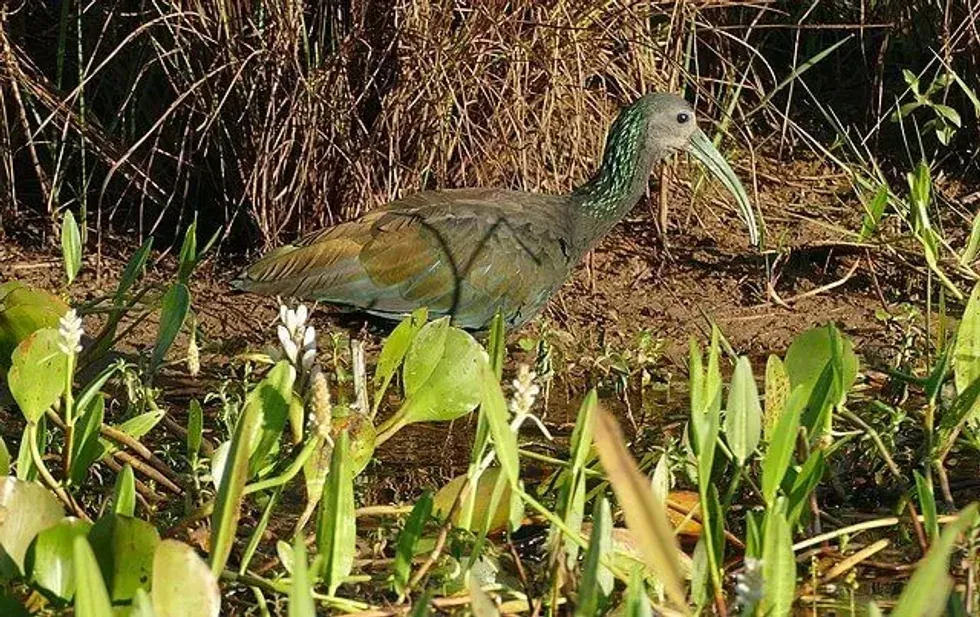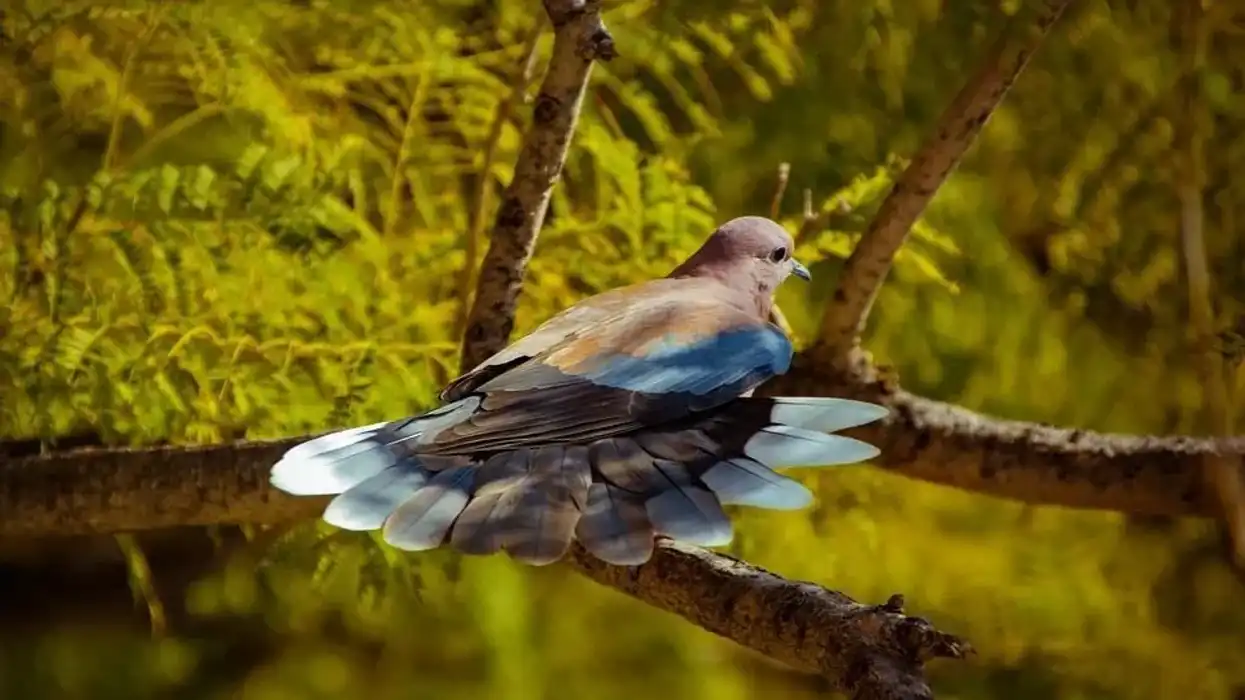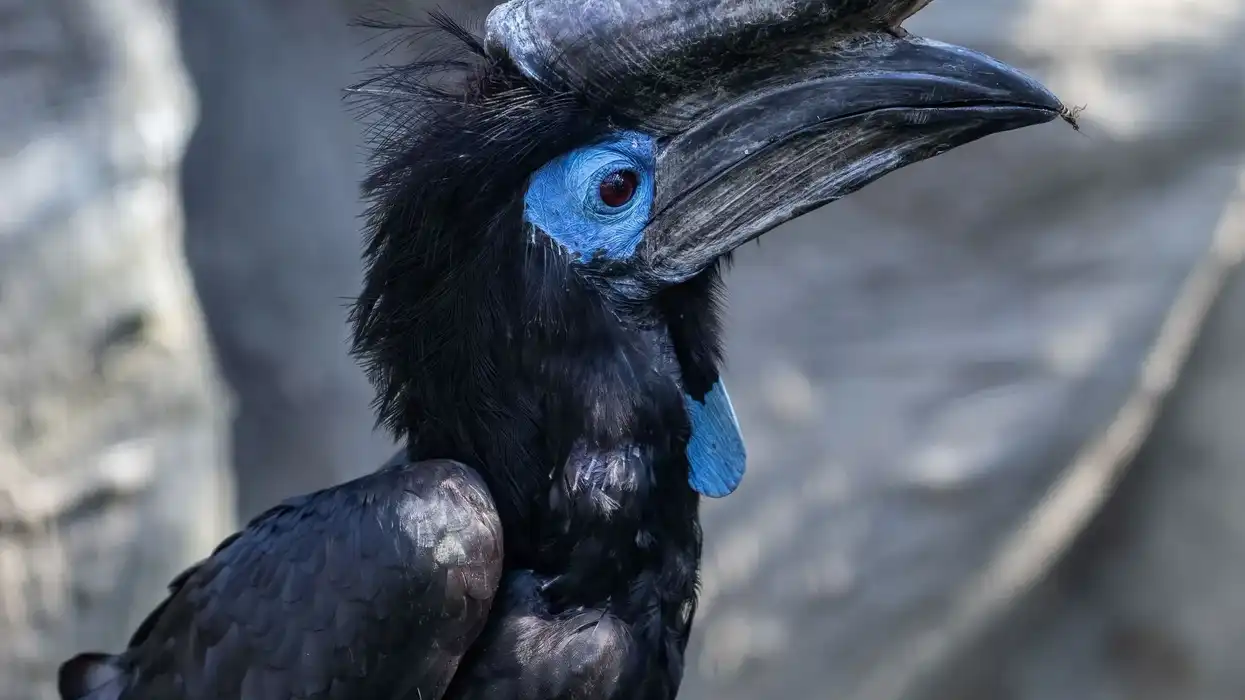There were a total of 28 species of ibis, however six of them are now declared extinct. The green ibis (Mesembrinibis cayennensis) is a member of the same family and is primarily a carnivorous species. They belong to the family Threskiornithidae, genus Mesembrinibis. The green ibis is also called the cayenne ibis.
The green ibis (Mesembrinibis cayennensis) has a greenish-black body and both males and females look similar in appearance. However, they differ in size, with females being relatively smaller.
This difference in size and appearance is referred to as sexual dimorphism. Green ibis (Mesembrinibis cayennensis) are a sedentary species and reside in the same regions with slight movements within the same territory to find appropriate feeding grounds. They are seen in Nicaragua, Costa Rica, Panama, South America, and Argentina.
The green ibis (Mesembrinibis cayennensis) flight is heavy, so they are relatively slow at flying. These birds are medium-sized and their population is classified as Least Concern.
For more relatable content, check out these fact pages about the giant ibis and mockingbird.
Green Ibis Interesting Facts
What type of animal is a green ibis?
The green ibis (Mesembrinibis cayennensis) is a type of bird that belongs to the kingdom Animalia and orders Pelecaniformes.
What class of animal does a green ibis belong to?
The green ibis (Mesembrinibis cayennensis) is a type of bird that belongs to class Aves, family Threskiornithidae, and genus Mesembrinibis.
How many green ibises are there in the world?
The exact number of green ibises or cayenne birds in the world is not known. There are 28 species of ibis, and six of them are now declared extinct. Green ibises are classified as a Least Concern species.
Where does a green ibis live?
Green ibises live in forests, savannas, and wetlands. Mesembrinibis cayennensis are seen in Nicaragua, Costa Rica, Panama, South America and Argentina.
What is a green ibis's habitat?
A green ibis's habitat constitutes forest swamps, marshes, savannas, and rivers. Mesembrinibis cayennensis move to find ample ground to forage on. Mesembrinibis cayennensis are widely seen in South American regions including French Guiana and other similar species can be spotted in countries around the world.
Who do green ibises live with?
Green ibises (Mesembrinibis cayennensis) live as solitary beings as well as in a group. A group of ibises can be called a congregation, wedge, or a stand.
How long does a green ibis live?
The Mesembrinibis cayennensis (green ibis) exact lifespan is not known. Sacred ibis may live up to 20 years. The sacred ibis is from the same family genus as the green ibis, genus Mesembrinibis.
How do they reproduce?
Mesembrinibis cayennensis are a largely solitary bird. Male and females come together for mating, and the females give birth to two to four eggs after mating. Their nest is built above water.
Their incubation period is not evaluated. The juveniles are small in size and dependant on their parents for food and shelter. The nestlings begin fledging after 25 days.
Species like the white-shouldered ibis breed only during the dry season. Choosing the dry season is bird-specific and not owing to any other specific reasons. Giant ibis prefer wetlands to breed over the dry season, and so does the green ibis.
What is their conservation status?
Mesembrinibis cayennensis (green ibis) is classified as a Least Concern species by the International Union For Conservation Of Nature (IUCN). The green ibis range map is available on the IUCN Red List.
Green Ibis Fun Facts
What do green ibises look like?
Mesembrinibis cayennensis, or the green ibis, is a small to a medium-sized bird. They have greenish-black bodies. When seen in the dark, they usually appear more black than when they are seen in the light.
The green ibis wingspan is 20 in (50.8 cm), and their flight is heavy. Mesembrinibis cayennensis length is 17.7-23.6 in (45-60 cm). Females tend to be smaller compared to males.
Their neck is stretched out with green legs and a bill that is pointed. They have two dark-colored eyes. Their feet are relatively light-colored and not webbed.
How cute are they?
This Cayenne bird is an exotic bird and not innately cute in appearance. They belong to the genus Mesembrinibis.
The Cayenne bird's unique coloration is a must-see for all birdwatchers. It's best to visit a range native to this species to ensure that you are able to see a good population of this bird species. Places like French Guiana in South America or Costa Rica are good locations.
How do they communicate?
The ibis is mostly a silent bird, however, this bird can communicate with honking calls or noises, specifically when they sense the presence of a predator. These Cayenne birds communicate with other birds during the mating season. They communicate using various other calls and sounds. All ibises have a distinct and unique call which may be confused with another.
How big is a green ibis?
The Cayenne or green ibis species is 17.7-23.6 in (45-60 cm) in length which is bigger than the African pygmy goose species, which measures 12 in (30.5 cm) in length, belonging to a different order, family, and genus.
How fast can a green ibis move?
A green ibis or cayenne bird exact flying speed is not evaluated however, these birds are a relatively slow bird species in flight. The peregrine falcon is considered to be the fastest bird in flight. Their flight speed may range up to 200 mph (321.9 kph).
How much does a green ibis weigh?
The green ibis or cayenne bird weighs 1.5-1.8 lb (700-800 g). Their weight may range slightly more or less depending on their intake patterns.
What are the male and female names of the species?
Male and female cayenne birds are not addressed differently. Female ibises are relatively smaller in size compared to males although they look similar in appearance. They also differ in reproductive functions.
What would you call a baby green ibis?
A baby green ibis or cayenne bird can be referred to as a juvenile or a nestling. The young of this species are incubated for a period of time and then set out to live independently. They are dependent on their parents for food and shelter in the initial few weeks.
What do they eat?
The green ibis species are primarily carnivores. The cayenne bird feeds on frogs, snails, worms, and small fish. They look out for fishes in shallow water regions and regions near shorelines. They prefer eating insects since they are more easily accessible.
Are they dangerous?
No, these birds are not innately dangerous. However, they are wild birds and it is best to maintain a distance while observing such species of birds.
They are usually seen together in groups and this might overwhelm you and too many together can create a ruckus. These birds are also known to defecate in multiple spots and create foul smells. These birds may also cause sicknesses to humans.
Would they make a good pet?
Yes, you can adopt an ibis bird as a pet. When adopting, they are bought or adopted in groups. They are popularly seen as pets in Australia.
The green ibis is seldom seen as a pet. These are innately wild birds, and hence it's best to observe them in their natural environment. A pet ibis is safe to be around, however wild birds are not safe so it's best to observe these birds at a distance.
Did you know...
The word 'ibis' has been derived from a Latin and ancient Greek word which translates to 'a group of birds'.
Ibis birds have fossil records that date back to 60 million years. Ibis birds were mummified in Egyptian tombs. This was owing to the fact that they believed that the Goddess of Throth was similar to an ibis. The Goddess of Throth represented knowledge.
Can green ibises fly?
A green ibis does fly, however, its flight pattern is unknown. It is not a fast flyer and flies at moderate speeds. A glossy ibis is rarely seen, however, they have a graceful flight pattern and fly in collective groups in a V formation.
The glossy ibis also has shiny feathers and a glossy ibis is blue-gray in color. However, a glossy ibis looks dark overall. All species of ibis are capable of flying, but their flight speed and pattern may vary slightly.
Where does a green ibis lay their eggs?
Green ibises lay their eggs in nests. Their nest is built above water and their nest is a loose-built collection of twigs.
In each clutch, they lay two to four eggs. Each species of ibis lay nests in a similar pattern but some ibis species may vary in choosing their nesting spot. The nest in the case of the green ibis is built near their habitat itself to ensure their offspring are protected from any predators.
Here at Kidadl, we have carefully created lots of interesting family-friendly animal facts for everyone to discover! For more relatable content, check out these giant cowbird facts and rhinoceros auklet facts for kids.
You can even occupy yourself at home by coloring in one of our free printable Laysan albatross coloring pages.









